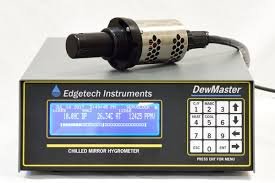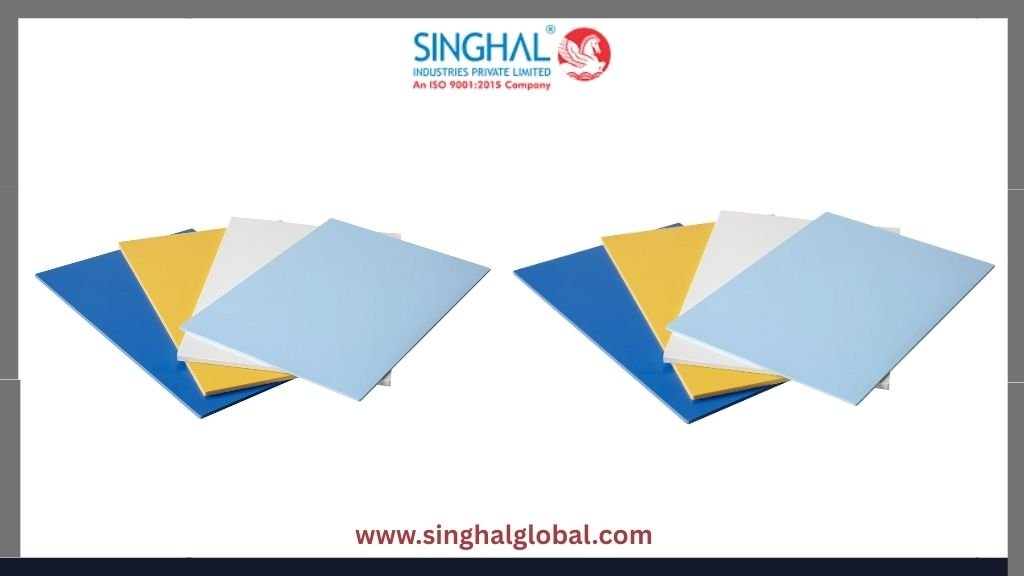When it comes to accurate and reliable humidity measurement, no instrument compares to the chilled mirror hygrometer. It is widely regarded as the most precise device available for determining dew point, frost point, and water vapor content in a gas. Used in critical applications such as laboratory research, calibration laboratories, semiconductor manufacturing, pharmaceutical production, and environmental monitoring, the Dew Point Sensors stands at the intersection of science and precision engineering.
This comprehensive guide will explore how Dew Point Measurement works, its components, advantages, applications, and maintenance practices. Whether you’re a scientist, engineer, or industrial technician, understanding this technology is essential for tasks requiring the highest level of humidity measurement accuracy.
What is a Chilled Mirror Hygrometer?
A chilled mirror hygrometer is a high-precision instrument designed to measure the dew point or frost point temperature of a gas by cooling a mirror until condensation or frost appears on its surface. Unlike capacitive or resistive sensors, which estimate humidity based on electrical properties, the chilled mirror method determines humidity by direct physical observation.
The working principle is based on optical detection: a mirror is chilled until moisture condenses on it, and a light beam reflects off the mirror surface. The presence of condensation scatters the light, which is detected by a photodetector. At this critical point, the temperature of the mirror is equal to the dew point of the surrounding gas.
This approach makes the Dew Point Measurement the reference standard for many national metrology institutes and calibration laboratories.
How Does a Chilled Mirror Hygrometer Work?
The Dew Point Sensors involve a feedback-controlled cooling system and a highly polished mirror. Here’s a detailed step-by-step explanation of how it functions:
Sample Gas Flow:
A sample of the gas whose humidity needs to be measured is directed to flow over a small, highly reflective mirror. The gas can be air, nitrogen, or any other dry or humid gas.
Mirror Cooling:
A thermoelectric cooler, often based on a Peltier device, gradually reduces the mirror’s temperature. The cooling is precisely controlled so that the system can reach the dew point without overshooting.
Optical Detection:
A light source, typically an LED or laser, shines on the mirror surface. As the temperature drops, moisture begins to condense on the mirror. This causes a change in how light is reflected.
Condensation Sensing:
A photodetector observes the reflected light. When moisture forms, the scattered light intensity changes, triggering the controller to stop cooling.
Temperature Measurement:
At the point of initial condensation, a precision platinum resistance thermometer (PRT) or similar sensor measures the mirror temperature. This temperature is the dew point.
Stabilization and Cleaning:
The system maintains the dew point condition and can automatically clean or dry the mirror for repeated measurements.
This real-time, physical measurement of condensation eliminates the need for indirect estimation, offering unparalleled accuracy.
Key Components of a Chilled Mirror Hygrometer
Dew Point Measurement a complex instrument with several essential components working in harmony:
- Polished Mirror Surface: The critical surface where condensation or frost forms. Must be optically smooth and contamination-free.
- Thermoelectric Cooler (TEC): Allows for rapid and precise cooling of the mirror.
- Light Source and Photodetector: Optical sensors to detect changes in reflectivity due to condensation.
- Temperature Sensor (RTD or PRT): Measures the exact temperature of the mirror surface.
- Controller Unit: Manages the cooling cycle, stabilization, and feedback loop.
- Flow System (optional): For sampling gases in industrial setups or pressurized systems.
Some advanced models feature automatic cleaning systems, display interfaces, digital outputs (RS232/USB), and integration with SCADA or data logging systems.
Advantages of Chilled Mirror Hygrometers
The Dew Point Measurement offers several significant advantages that make it the benchmark for humidity measurement:
Highest Accuracy and Repeatability
Unlike resistive or capacitive sensors, chilled mirror systems provide direct measurement of dew or frost point, not a calculated estimate. This leads to exceptional precision, often within ±0.1°C or better.
Long-Term Stability
With minimal drift over time, Dew Point Measurement requires less frequent recalibration than other humidity sensors, reducing operational costs in critical systems.
Traceability to National Standards
Because the measurement is based on fundamental physical principles, chilled mirror readings are traceable to SI units, making them ideal for calibration labs and certification.
Wide Measurement Range
These instruments can measure dew points ranging from -100°C to +90°C or even broader, depending on the model and application.
Non-Sensitive to Gas Type
Dew Point Sensors can measure humidity in a variety of gases without recalibration or compensation factors.
Applications of Chilled Mirror Hygrometers
Due to their high accuracy, Dew Point Measurement is used in a wide range of industries where environmental control and process stability are critical.
Calibration Laboratories
Metrology institutes use Dew Point Sensors to calibrate other humidity sensors, thanks to their SI-traceable readings.
Semiconductor Manufacturing
In chip fabrication, even minor fluctuations in humidity can cause defects. Dew Point Measurement ensure optimal moisture control in cleanrooms.
Pharmaceutical Industry
Storage and production of medicines often require stringent humidity control. Chilled mirrors provide regulatory compliance and product integrity.
Gas Drying and Purity Monitoring
Petrochemical plants and gas delivery systems need to monitor dew points to prevent pipeline condensation and ensure dry gas delivery.
Aerospace and Environmental Testing
In wind tunnels, vacuum chambers, and environmental test facilities, chilled mirrors measure precise humidity under controlled conditions.
Limitations and Maintenance Considerations
While Dew Point Measurement is highly reliable, it comes with certain limitations and maintenance requirements:
Sensitive to Contamination
Dust, oils, or vapors can settle on the mirror, leading to erroneous readings. Frequent mirror cleaning or use of filters may be necessary.
Higher Cost and Complexity
Compared to capacitive sensors, chilled mirror hygrometers are more expensive and complex to operate, making them more suitable for critical applications.
Size and Portability
Although portable models exist, they are generally larger and heavier than simpler humidity sensors.
Requires Controlled Flow Rates
To get accurate readings, gas flow over the mirror must be regulated. Excess flow or turbulent gas may cause instability in the reading.
Proper Maintenance for Accuracy and Longevity
To ensure long-term accuracy and durability of a Dew Point Sensor follow these best practices:
- Keep the Mirror Clean: Use recommended solvents or ultrasonic cleaners to remove residue from the mirror surface.
- Use Filters: Inline filters help prevent dust and oils from contaminating the optical system.
- Calibrate Periodically: Although drift is minimal, periodic calibration against a reference standard is advised.
- Control Flow Rate: Use flow regulators or mass flow controllers to ensure steady gas flow across the mirror.
- Monitor Optical Signal: A drop in signal quality can indicate contamination or alignment issues.
Manufacturers often provide automatic maintenance routines and cleaning cycles in high-end models to reduce manual intervention.
Conclusion
In the world of humidity measurement, chilled mirror hygrometers represent the pinnacle of precision, stability, and reliability. Their ability to provide traceable, direct readings of dew and frost point temperatures makes them indispensable in high-stakes environments where accuracy cannot be compromised.
Whether you’re calibrating sensors in a laboratory, maintaining product integrity in pharmaceuticals, or ensuring safe gas delivery in pipelines, the Dew Point Measurement delivers results you can trust. While they require a higher initial investment and some maintenance, the benefits they offer far outweigh the costs, especially in applications where even small deviations in humidity could have critical consequences.










Leave a Reply